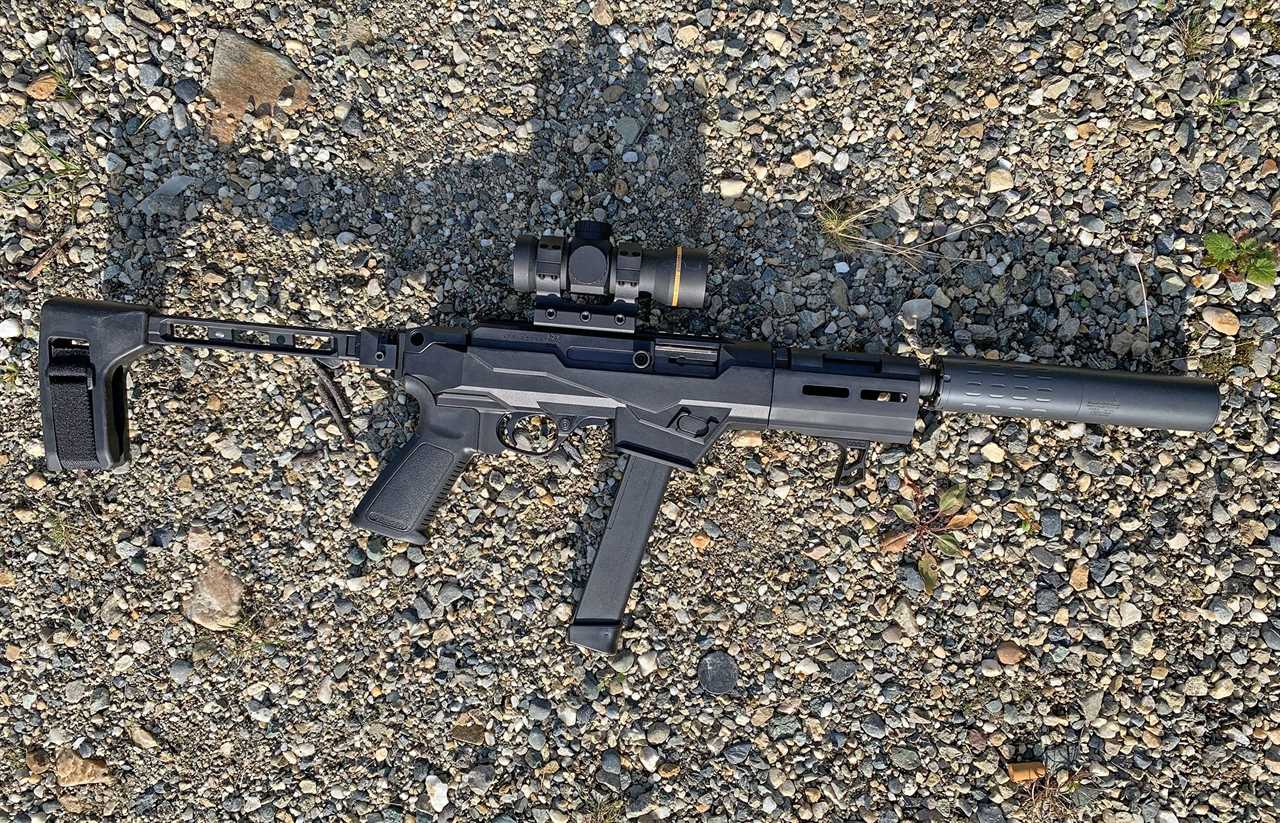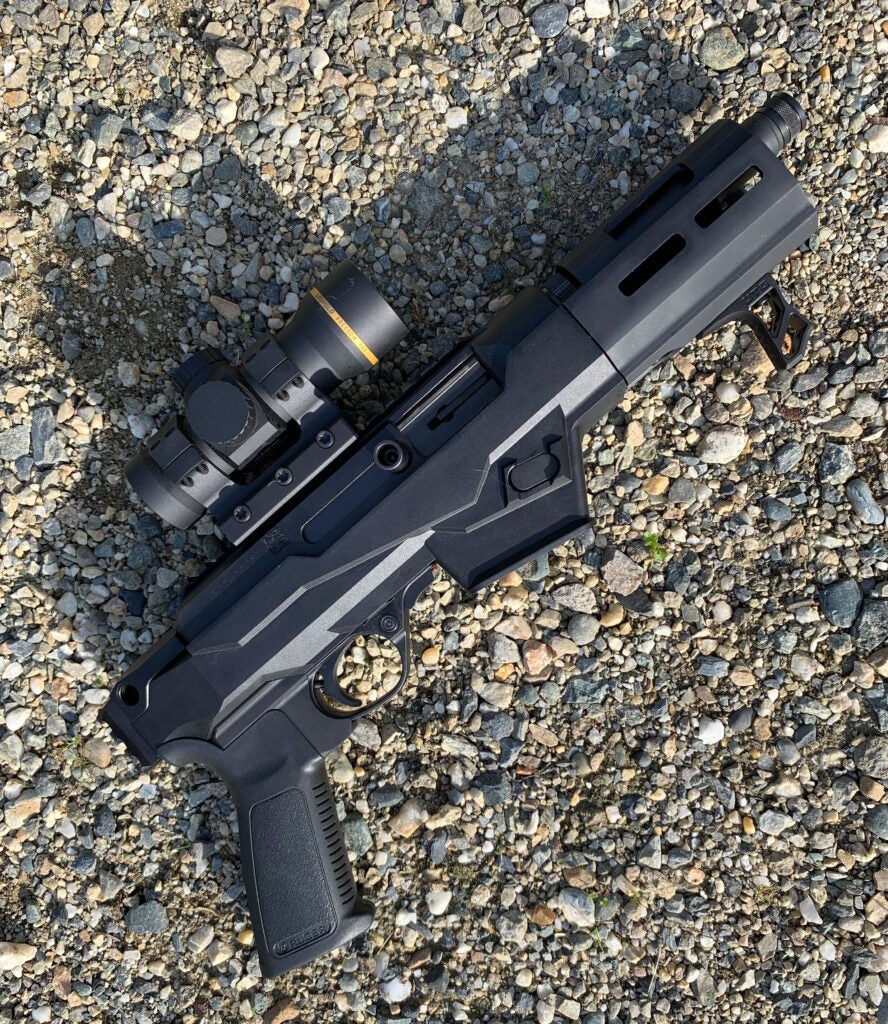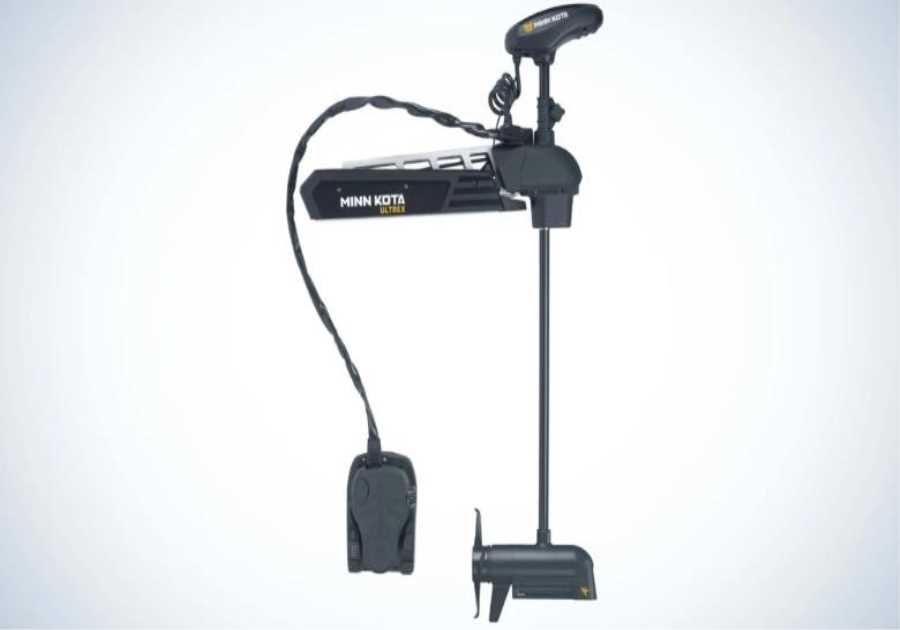
The Ruger PC platform has been around for a few years now and it’s built a reputation as an affordable and adaptable takedown 9mm carbine. However, the new 2021 iteration, the Ruger PC Charger, is what the platform should have been all along. If a 10/22 and a Ruger Precision rifle got together and had a kid, you’d end up with something like the PC Charger, or at least that’s how I’d describe it.
Ruger PC Charger Specs and Features
- Capacity: 17
- Weight: 5.2 lb.
- Barrel Length: 6.50 in.
- Overall Length: 16.50 in.
- Stock Option: Takedown
- Receiver Material: Aluminum Alloy
- Receiver Finish: Type III Hard-Coat Anodized
- Twist: 1:10 inches RH
- MSRP: $849
At its core, this gun shares the same basic features as the PC Carbine and other PC models. The 10/22-style aluminum receiver features an integral machined optics rail, and the Charger uses the same simple takedown system that the carbines use. The charging handle is held in place by a set screw and can be removed and installed on either the left or right side of the receiver.
The PC charger features a glass-filled polymer chassis that holds the receiver and trigger group. It has no stock, but it can be fitted with a brace (more on this later). It features a Picatinny rail and QD sling receivers on each side. Within the chassis also sits the removable and interchangeable inner magwell and ejector assembly. The magazine release button is located toward the front of the magwell and can be easily reversed to work on either side of the gun.
On the front end, the removable barrel assembly features a milled handguard with M-Lock slots, a hand stop, and a 6.5-inch threaded 9mm barrel, (the original PC carbine featured a 16-inch barrel). The Charger has no iron sights, unlike the original carbine, and is intended to be paired with an optic.

Ruger PC Charger Versatility
The PC Charger’s versatility is what makes it so intriguing. Sure, the idea of a takedown 9mm plinker and survival-type gun is cool, but you’re not really gaining much from a survival, defense, or hunting standpoint with the 9mm in a full-length 16-inch barrel. The popular pistol brace platforms create a more compact, but equally capable, gun. The Picatinny rail on the back of the chassis mates easily with a brace like the SB Tactical FS1913 for better accuracy.
The overall adaptability of the Charger is attractive as well, both the magazine release button and charging handle can be reversed, and used on either side of the gun to accommodate personal preference. The chassis is compatible with any standard AR grip that you might prefer. At face value, the trigger group is very similar to the 10/22, fitted to the receiver with removable pins. Companies like Franklin Armory are making binary triggers that you can easily use in the PC Charger and other Ruger PC carbines.
The shorter threaded barrel makes using a suppressor even more comfortable and convenient than on longer barrels. Probably the smartest feature, however, is the interchangeable inner-magwells that come with the PC Charger. The gun ships with Ruger SR-series pistol magazines, but also includes a magwell that accepts the readily available Glock magazines. The magwell is easily installed and seems to work flawlessly with newer Glock brand magazines.
Charger Performance
Affordability and versatility are all great, but what I really wanted to see was how reliable this gun would be, especially the interchangeable magwells. I fired several hundred rounds of various 9mm loads through my PC Charger and had only a single malfunction—one stovepipe using an older G17 magazine. Aside from that, it chewed up and spit out everything from 115- and 147-grain handloads with mixed range brass, to premium defense loads. I tested the gun without cleaning it, aside from periodic wipe-downs of major components.
After a couple hundred rounds with a suppressor, I noticed that the mag release button was sticking. Upon taking it apart, I saw that some unburnt powder that was forced back into the action by the pressure from the suppressor had accumulated on the magazine release. Simply wiping it away cured the problem. Being a straight blowback-operated gun, the PC Charger is going to get dirty, especially if you’re using a suppressor. So, depending on the powder you’re using and how much shooting you do, plan on regular cleanings.
I fitted this gun with a Leupold Freedom RDS 1x34mm red dot, which has a higher profile than some competitors on the market, but it’s a solid option for the price. I also used the SB 1913 Brace, and a Silencerco Hybrid 46 Suppressor. Accuracy was about what I would expect from this caliber and barrel length. My 50-yard, 5-shot groups averaged 2.5 inches, with the best being just under 2 inches with Winchester USA Ready defense 124-grain +p loads. It shot 3- to 3.5-inch groups for most 147-grain loads, including Federal Premium Syntech Training/Match and Hydra-Shok defense loads. This sort of accuracy is certainly satisfactory for the PC Chargers applications.
As far as 9mm PCC-type firearms go, this one is a good bargain. It’s about half the price of competitors, and it brings a tremendous amount of utility and versatility to the table. The PC Charger is every bit as useful for a pack or survival gun as the larger Ruger PC’s, but it also makes for a very suitable beater truck gun, home defense tool, or an absolutely joyful plinker.
The post Ruger PC Charger Review: A Versatile Pistol for Plinking and Survival appeared first on Outdoor Life.
-------------------------------------
By: Tyler Freel
Title: Ruger PC Charger Review: A Versatile Pistol for Plinking and Survival
Sourced From: www.outdoorlife.com/guns/ruger-pc-charger-review/
Published Date: Mon, 13 Sep 2021 20:36:48 +0000
Did you miss our previous article...
https://playeverysport.com/recreational-sports/best-truck-bed-extenders-to-haul-more-gear
.png)





